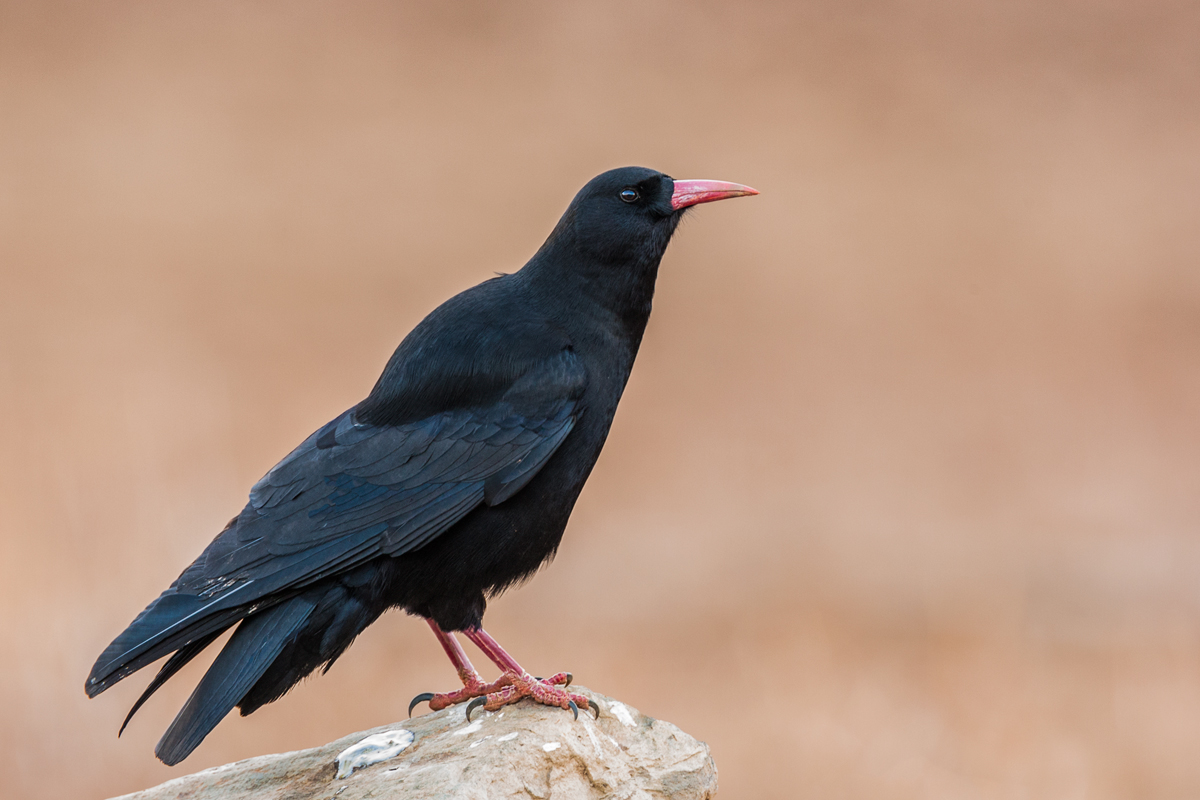| Kingdom: Animalia Phylum: Chordata Class: Aves (Birds) Order: Passeriformes Family: Corvidae Corvinae |
Status: Not threatened
Red-billed Chough (Pyrrhocorax pyrrhocorax) is a local resident in Himalayas. It is found in the upper reaches of the Himalayas, from where it descends to altitudes of 1800 m in winter. Outside India, the Red-billed Chough breeds in Great Britain, Ireland, southern Europe, Mediterranean basin, Alps, and in mountainous country across central Asia, Iran and China. It is resident throughout its range. Two races are found in India; P. pyrrhocorax centralis (north and western Himalayas) and P. pyrrhocorax himalayanus (central and eastern Himalayas). The Red-billed Chough is 38-43 cm in length, has a 70-90 cm wingspan and weighs 280-320 gm. Its glossy black plumage (with bluish-green sheen), slender slightly curved red bill and bright red legs distinguish it from all other birds. Sexes alike. The Chough has a buoyant and easy flight. It soars above the cliffs with wide-spread primaries; the tips of these bend upwards as it curves and turns, sweeping round gracefully. Its movement on the ground has been described as "a short and very quick run," but it will walk as sedately as a Rook. Its loud, ringing call 'kee-aw' or 'cheeao' is clearer and louder than that of the Eurasian Jackdaw (Corvus monedula). 'Chuff', from which it gets its name, is another common cry. The Red-billed Chough's lifespan can extend upto 16 years. This bird is quite tame near habitation, often perching on rooftops and flag-posts in mountain villages. Its preferred habitat is temperate high mountains with steep cliffs, alpine meadows, sloping Yak pastures and high-altitude cultivation. There is considerable altitudinal migration, going up to 4500 - 8000 m in summers and down to 1800 m in winters. Its food mainly consists of insects, grubs, berries and barley grains. In winter large flocks, feeding in company of Yellow-billed Chough (Pyrrhocorax graculus), often prove destructive to barley crop. Mountain caves and hollows of steep crag and cliff faces are a site for the Chough's nest. Sometimes, in mountain villages the walls of derelict houses and monasteries are also used. The same sites are commonly used year after year. The nest is a bulky cup or platform of twigs, roots and stems, and is lined with wool or hair. The eggs are three to five in number, laid in March-May and the incubation period is ~18 days. They are spotted and speckled with various shades of brown and grey on a creamy-white or slightly tinted ground. Both sexes take part in nest-building, incubation and tending the young. |
 birding.in
birding.in| Birds | Bird Diagram | Ornithology | Indian Sites | Bird Watching | Migration | North India | Birds of India | Haryana |
All rights reserved. Copyright © 2005-2013 Birds and birding in India. Disclaimer
website: Free Java Guide & Tutorials
